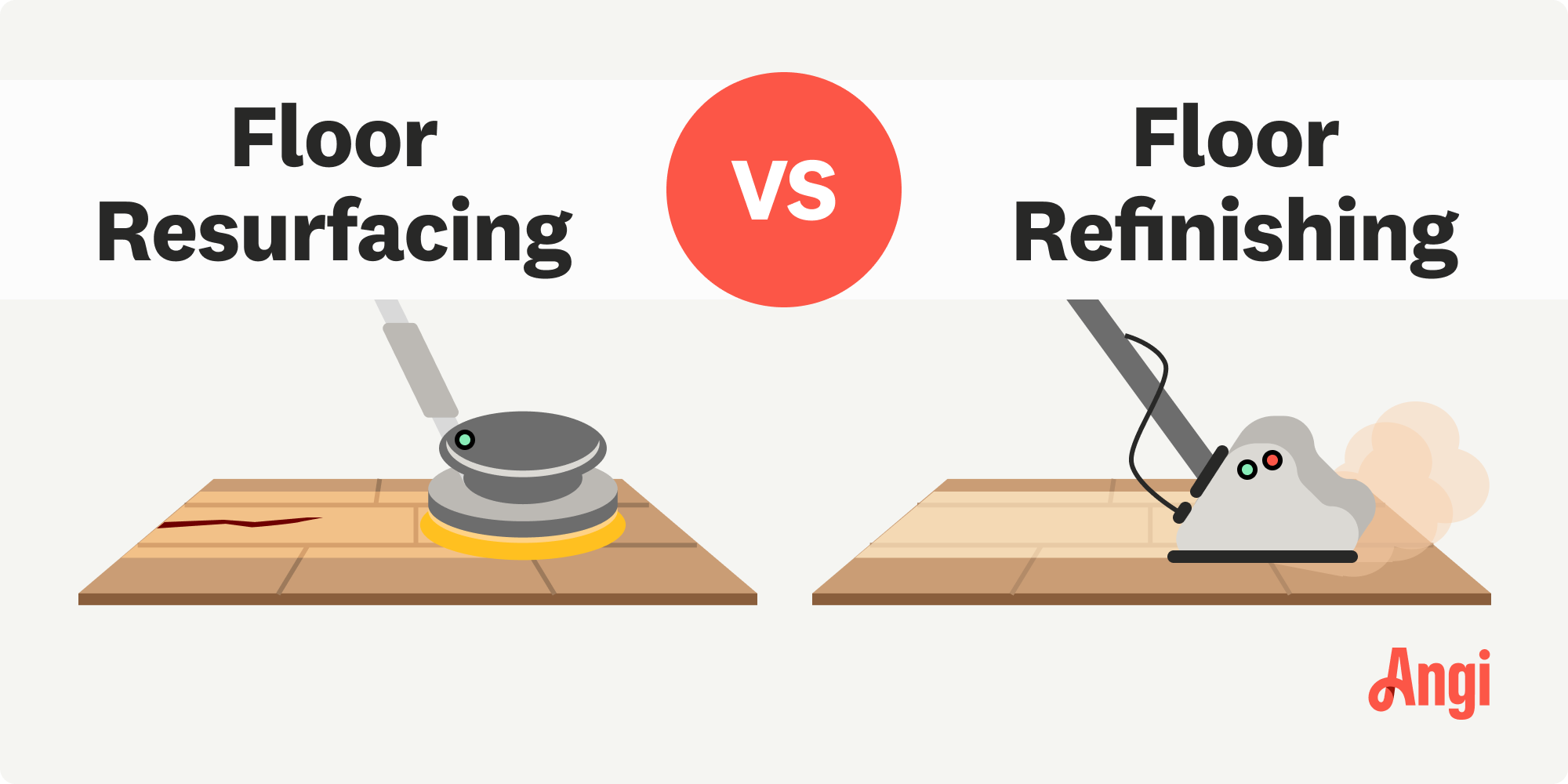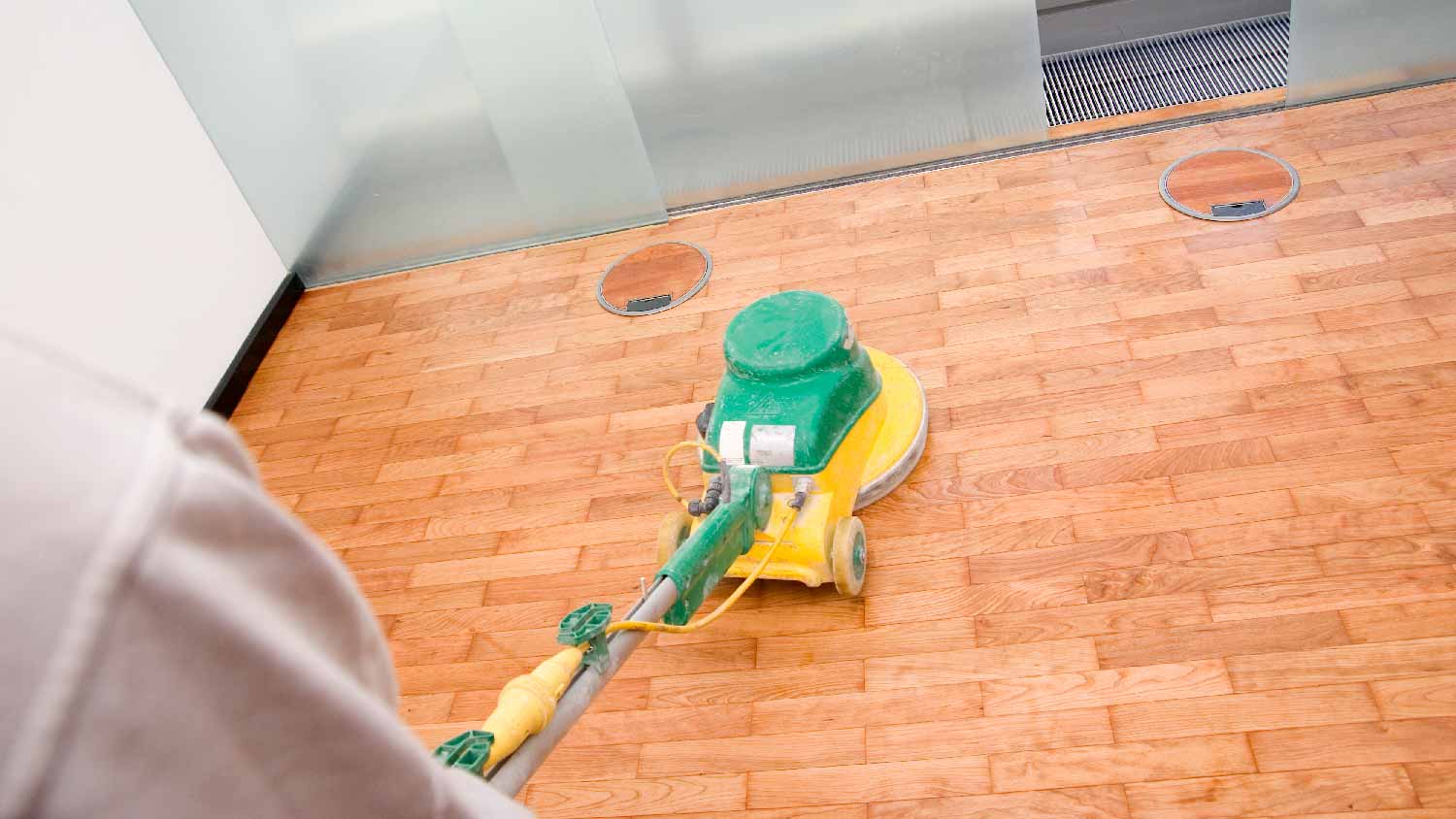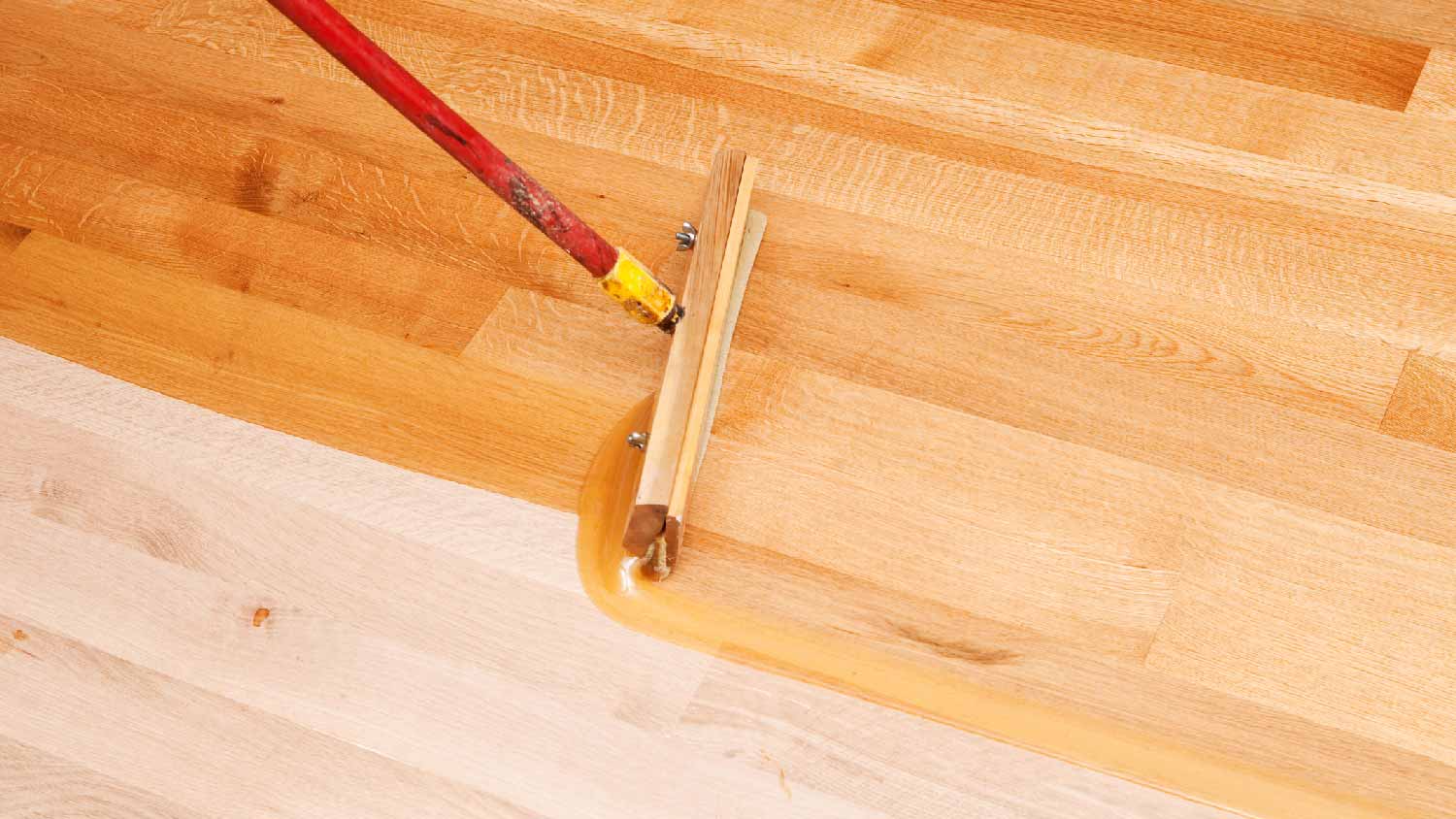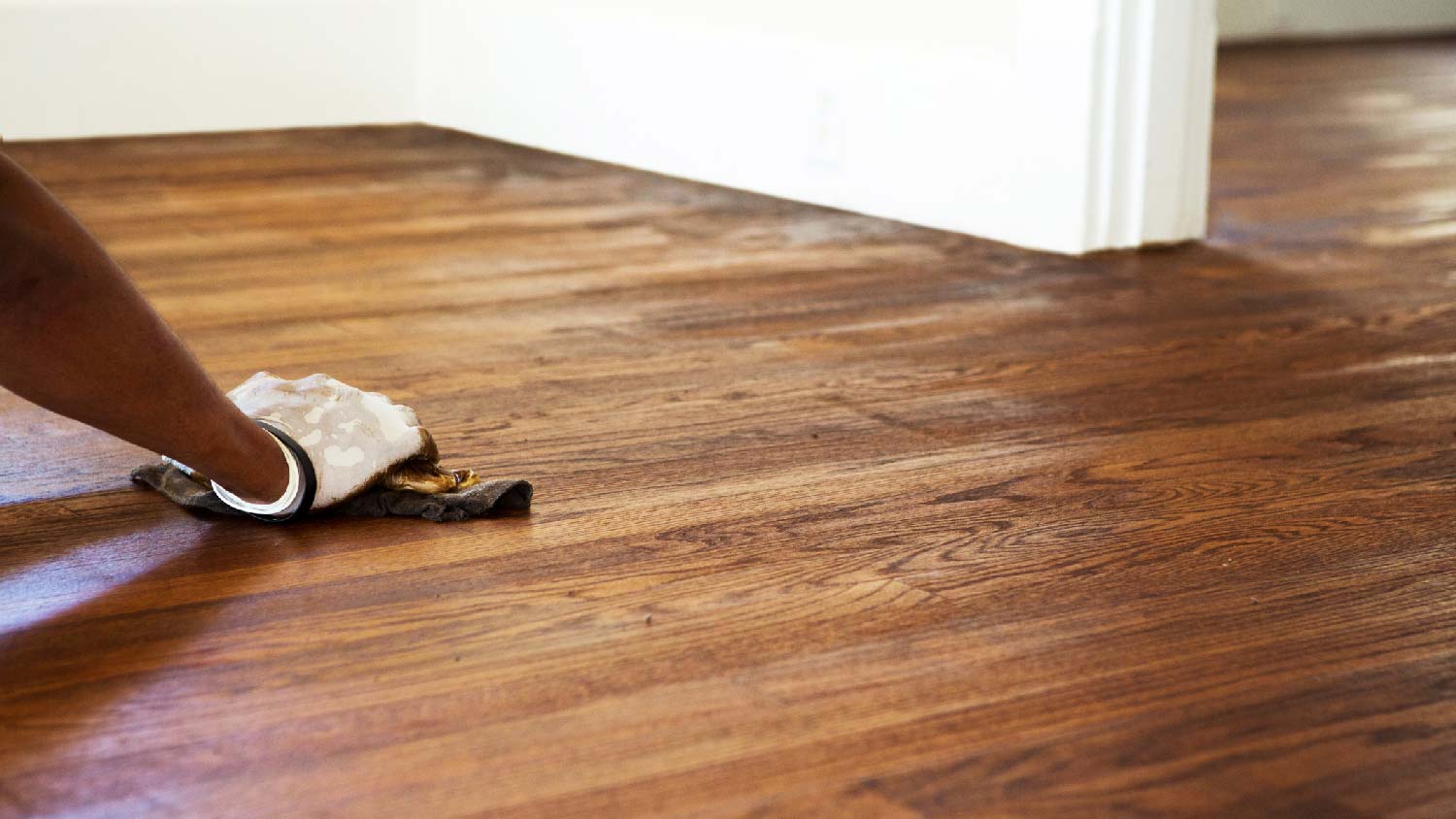
Both materials and labor determine hardwood floor installation costs. This guide breaks down all the prices you need to know before starting your new flooring project.
Decide if you want to DIY or if you want a sparkle that lasts the longest


Resurfacing involves buffing off surface layer damage before applying a new finish.
Refinishing requires sanding down to expose raw wood before applying a new finish.
Resurfacing is faster and less expensive, but it doesn’t remove deep damage.
Refinishing removes deep damage and increases durability, but it takes longer and costs more.
If your hardwood floors are looking more hard than wood, resurfacing or refinishing can give them new life. However, when you take a closer look at hardwood floor resurfacing versus refinishing, these two methods impact the floor’s durability and appearance in different ways. Considering your budget, available time, and DIY skills can help you decide if one of these methods is right for your floor.

Resurfacing and refinishing are similar, but they’re different processes. Resurfacing involves buffing away cosmetic damage but leaving a shallow layer of finish. Then, a new finish layer is applied on top.
Refinishing entails completely removing the finish layer and exposing raw wood. Then, a new finish layer is applied that bonds directly to the raw wood. Refinishing requires more time, expertise, and money, but the results are longer-lasting. Resurfacing saves time and money and is more DIY-friendly than refinishing.

Resurfacing a hardwood floor involves using a floor buffer to remove surface damage in the floor’s finish before adding a new layer of finish on top. While buffing a hardwood floor takes about five to six hours, you don’t have to completely remove the existing finish or top layer of the hardwood, unlike when refinishing a floor.
| Pros | Cons |
|---|---|
| Less expensive | Doesn’t remove deep damage to the wood |
| Takes less time | The final finish is less durable |
| Doable for DIYers | Fewer options for changing the look of the floor |
Best for:
Floors with light surface damage
Homeowners with a busy schedule
Those who want to DIY their floor upgrade
Resurfacing takes less time than refinishing because it doesn’t require removing all of the finish to expose raw wood. Instead, you buff the floor and leave a shallow layer of finish behind. Depending on the floor's square footage, resurfacing can be completed in a day or two. If you hire out, a wood floor refinishing pro can get the job done in less time.
Resurfacing is also less expensive. You’ll need to rent a floor buffer, which costs about $50 to $75 per day. You’ll most likely only need it for one or two days, unless you have a large room or house with extensive hardwood flooring.
While buffing does require some skill, a floor buffer is more forgiving than a drum sander. The chances of permanently damaging the floor with a buffer are lower.
Resurfacing cannot repair deep damage in hardwood, so it’s not an ideal option for heavily damaged floors. If the floor has deep gouges, scrapes, or scratches, you’ll still be able to see them after resurfacing.
Additionally, the finish of a resurfaced floor doesn’t have the same durability as one that’s been refinished. That’s because a refinished floor’s finish binds directly to the hardwood.
Finally, resurfacing doesn’t leave many options for changing the floor's look. Any finish you apply will be affected by the original finish’s color and tone. The new finish must complement the old finish, which limits the extent to which you can alter the final appearance.

Refinishing a hardwood floor involves sanding off the finish and a shallow layer of wood to reveal the raw wood underneath. The process can remove and smooth deep gouges, scratches, and water damage that hasn’t penetrated too deeply into the wood. You can then apply a new finish to the exposed wood.
| Pros | Cons |
|---|---|
| Allows for more aesthetic changes | More costly |
| Removes deeper damage | Takes longer |
| Adds a more durable finish | Requires more skill |
Best for:
Restoring badly damaged floors
Updating the look of a hardwood floor
Homeowners planning on hiring a pro who refinishes wood floors
Refinishing creates a more durable finish, making hardwood floors look like new. Sanding down to the raw wood also allows the new finish to bond directly to the wood, and the strong bond gives the floors greater durability. Completely removing the old finish also gives you more options if you want to change the color and overall look of the floors.
Finally, refinishing lets you completely remove damage that’s in the upper layer of the hardwood. That makes refinishing an excellent method for repairing heavily damaged floors. While it’s possible for some of the deepest damage to remain, refinishing lets you remove most damage to restore the floors to their original shine.
If in good condition, original hardwood floors should always be considered for refinishing. While sanding can be messy, the result will be beautiful for decades if cared for properly. For historical homes, refinishing original floors also keeps the character of the house intact.
Refinishing can be more expensive because it takes longer and is less DIY-friendly. To achieve the floor's optimal condition, you might need a drum sander for several days. Drum sanders cost about $60 to $80 per day to rent.
Finally, sanding hardwood floors requires practice and skill. There’s more room for error if you don’t have experience. Consider hiring a local wood floor refinishing pro who can complete the job more efficiently and achieve professional-level results.

Here’s a comparison of resurfacing versus refinishing in categories worth considering when making a decision. Keep your budget, skills, and time constraints in mind, and you could see a clear winner for your project.
Refinishing creates the perfect surface for a completely new finish. The raw wood exposed during the process readily absorbs hardwood stain or color, giving you more options to change the look of the floors. Resurfacing allows limited changes because it’s applied on top of the old finish.
The bond between the hardwood and the new finish on a refinished floor increases the floor’s durability. Over time, it will withstand heavy traffic and damage better than a resurfaced floor.
Resurfacing isn’t as labor-intensive as refinishing. If you do it yourself, you won’t need to rent equipment for as long, saving money on the project. If you decide to hire a pro to resurface your floors, the job will take less time than refinishing, resulting in lower labor costs.
Sanding down your floor to the raw hardwood is a more delicate and challenging process than buffing away a surface layer finish. If your sanding technique is less than stellar, the floor may suffer permanent damage. Resurfacing isn’t a breeze, but it carries a lower risk of permanent damage.
From average costs to expert advice, get all the answers you need to get your job done.

Both materials and labor determine hardwood floor installation costs. This guide breaks down all the prices you need to know before starting your new flooring project.

Hardwood floor repair costs depend on the problem. This guide breaks down common costs based on factors like the type of problem, repair method, and whether you hire a pro or DIY.

It’s impossible to keep floors damage-free over the years. Thankfully, the cost to refinish hardwood floors is far less than the price tag to replace them altogether.

Unsure who to hire for hardwood floor refinishing? A professional floor refinisher is the answer. They provide guaranteed results and save you time and energy.

Are you wondering whether to choose engineered wood or hardwood flooring? We break down the pros, cons, costs, and differences so you can choose with confidence.

When properly maintained, hardwood floors can last a lifetime. Discover why they last so long and how to maintain your hardwood floor for the maximum life span.